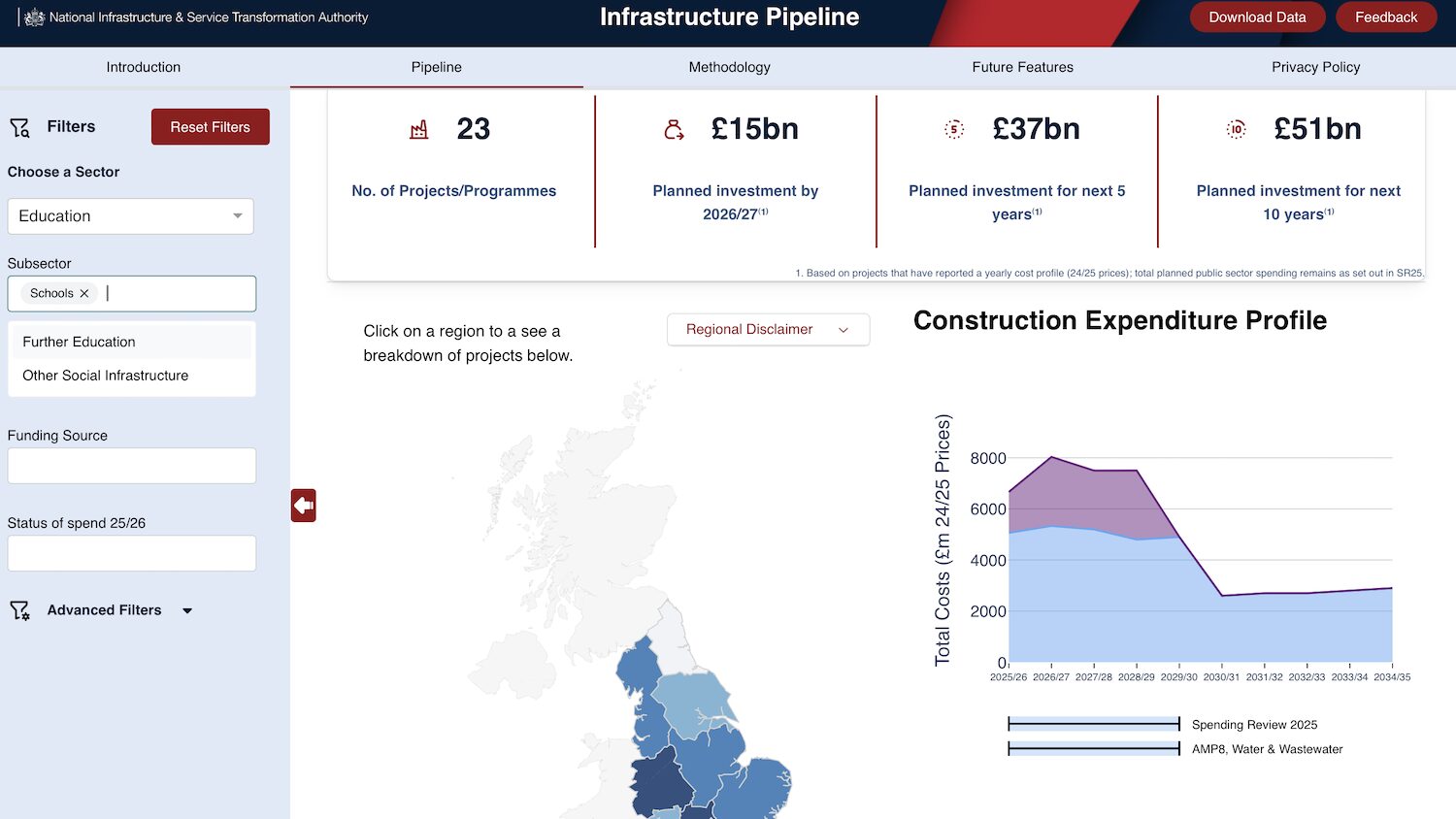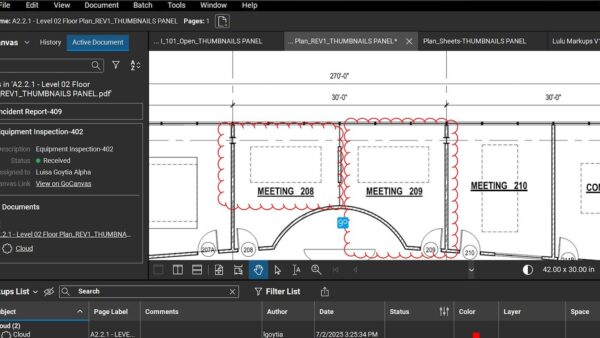
The government’s infrastructure pipeline tool is only a month old, but the Construction Leadership Council (CLC) has issued proposals for how it should be developed further.
The tool, developed by the National Infrastructure & Service Transformation Authority (NISTA), went live in July, containing information on nearly 800 projects worth £531bn in total over the next 10 years. The data in the pipeline tool is drawn from 40 government departments, public bodies and regulated businesses.
The CLC welcomed the pipeline tool’s launch, but proposes there should be two pipelines:
- an investment pipeline (effectively the data in the current pipeline tool) that provides a strategic, three-plus-year outlook that enables industry to invest in skills, capacity, and innovation while offering government a tool to signal policy priorities and drive strategic outcomes; and
- a two-stage procurement pipeline that encompasses near-term (up to three years) opportunities with actionable data for departments to plan procurement activity and for suppliers to make informed bid decisions and resource allocations. The two stages are ‘early view’ (upcoming opportunities) and ‘procurement-ready’ (approaching the tender phase).
Projects in the investment pipeline should be categorised by stage and certainty (for example: indicative, in development, funded) to support risk-based decision-making, the CLC said.
The procurement pipeline should deliver the procurement route, contract value, location, timelines, delivery model, and a named contact or procurement portal for each project listed. This pipeline should be updated on a quarterly basis. Data must also be consistent, structured and aligned to national templates to ensure comparability and confidence.
New reporting model
The CLC also proposed a new model for pipeline reporting:
- NISTA provides strategic leadership and enabling standards;
- government departments be responsible for maintaining and publishing their procurement pipelines, covering projects from Outline Business Case through to tender. This includes both the early view and procurement-ready stages; and
- a pipeline maturity index should be developed to benchmark departmental performance against data completeness, use of standard formats, frequency of publication.
The CLC said: “The next steps proposed are not about adding burdens, but about maturing the pipeline into a market-shaping tool, less politicised, more data-driven, and easier to use. By implementing these recommendations, government can restore market confidence, support better delivery outcomes, and embed a pipeline system that underpins a more resilient, innovative, and high-performing construction sector.”
NISTA’s next formal iteration of the pipeline tool is due in January 2026. But before then, it plans to backfill missing details for projects already in the tool and add more projects, including those in the third Road Investment Strategy due in the autumn and the roll-out of gigabit-capable broadband, plus data from the mayoral combined authorities.















